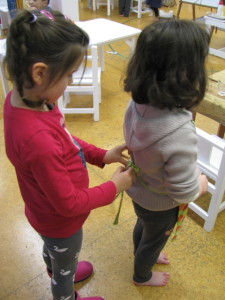By Joel Batson – Totara Teacher
Have you ever heard that phrase, “Hasn’t that child got such an active imagination?” It’s often said in relation to a young child acting out some story with or without props, with or without other young children. While there is truth to the statement it is actually referring to a behaviour, which is often misunderstood. A clear understanding of what imagination is and how we, as humans, use our imaginations increases the chances of a child reaching towards their full potential.
So then, what is imagination? Is it something weird and mystical? Something which some people have and some people just don’t?
Imagination is a creative power of the human brain. It is the ability to create new ideas based on what is already known and it’s also the vehicle with which we are able to traverse time and geography. It’s a process based on what is known (reality) and moves to what is either unknown or unknowable. For it to be used correctly, the use of the imagination must start with the known.
Imagination, therefore, is different from fantasy, thinking and reasoning. Fantasy is that place of make-believe and is largely based in an alternate reality. Think elves, fairies and other brands of escapism. Thinking is not necessarily a creative power and can be defined within the bounds of mental recount and memory. Also different from imagination is reasoning; more of a deductive power.
These definitions help us to understand the difference between the use of imagination at the first (in the pre-school) and second (in the primary school) planes of development, in the context of how the brain is operating at these stages. The first plane is concerned with the construction of the individual, giving real experiences the child absorbs with the help of their absorbent mind. It’s all about the ‘what?’ The second plane is more about the ‘why?’ The child loses their absorbent mind and develops the reasoning mind they’ll have for the rest of their lives.
The first plane is the set-up, laying the building blocks for the use of the imagination that begins to develop in the second plane (and stays with the child for the rest of his or her life). In the second plane, we begin applying this imaginative power to problems and solutions. This is what has allowed humans to spread across the earth, adapting to pretty much any environment. This is also where we see that the imagination is tied to the power to choose our actions, meaning that we actually have a responsibility to use our imaginations wisely.
Following are a few examples of how the imagination is used in class at the second plane: solving problems, creating business opportunities, imagining life in locations such as Ancient Egypt and how they used to re-measure their fields every time the Nile flooded and solving conflict by imagining how it is for others. This all is based on what is already known.
